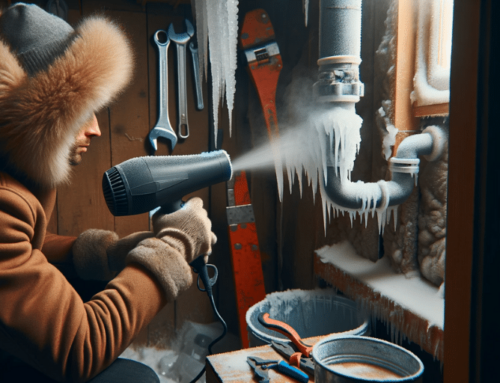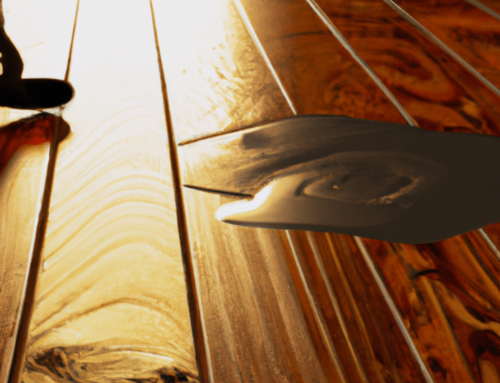How to Clean Bamboo Floors

Bamboo floors are a popular choice for many homeowners due to their durability, attractive appearance, and eco-friendly nature. However, it is important to know how to properly clean bamboo flooring in order to keep it looking its best. Cleaning bamboo floors requires more than just sweeping and mopping – you must also take special care when removing spills or stains and use the right cleaning products. With some basic knowledge of how to clean your bamboo flooring correctly, you can ensure that your beautiful floor will stay looking new for years to come!
Tools Needed for Cleaning Bamboo Floors
To get your bamboo floors clean, you need the right tools. In order to clean bamboo floors with efficiency, you will need soft-bristled broom, vacuum cleaner, damp mop, and bucket. These tools are essential in the process of keeping your bamboo floors spotless and well-maintained.
Soft-bristled Broom
A Gentle Bristle Sweeper is a must-have for cleaning bamboo floors. Why?
- Its soft bristles won’t scratch the surface.
- It captures dirt and debris without moving them around.
- It’s lightweight, so you can maneuver it easily.
- Vacuums can damage the floor or leave scratches.
- Regular sweeping with a gentle broom will keep your bamboo floors looking good.
Keep your Gentle Bristle Sweeper in good condition! Clean its bristles with a comb or brush. And store it in a dry, clean place.
Don’t miss out on the benefits of a clean bamboo floor. Get yourself a Gentle Bristle Sweeper today! But if you want to vacuum up your problems, get a vacuum cleaner made for bamboo floors.
Vacuum cleaner
For an efficient clean on your bamboo floors, use a suction device. Get one with a wand, hard-floor brush attachment and a HEPA filter. Avoid vacuums with beater bars or rotating brushes, as they could damage the flooring. Clean the filter regularly, to prevent clogging.
Sweep or dry-mop before vacuuming, to get rid of bigger particles or dust bunnies that may get stuck in the bristles or hose. This makes your cleaning even more effective!
Damp Mop
To keep bamboo floors clean and in top shape, a damp mop is essential! It’s a special kind of mop that gets rid of dirt and stains. Here’s a 5-step guide:
- Fill a bucket with cool water and add a mild cleaning solution.
- Dip the mop and wring out the water.
- Mop in circular motions from one end to the other.
- Rinse the mop often.
- Let it air-dry.
Be careful not to use too much water, as bamboo floors are sensitive to moisture. And if any spills or accidents happen, dry them up with a cloth right away.
Regular cleaning with a damp mop will keep your bamboo floor looking great for years. Start using this cleaning method today!
Bucket
A vessel container for cleaning solution is pivotal for bamboo floor cleaning. It should be large, strong and not scratch the surface. A plastic bucket is a good choice, being non-abrasive and lightweight. A double bucket system – one for clean water and another for dirty – keeps your floor in order. A microfiber mop with a damp mop head is best, as too-wet water can cause warping and gaps. Invest in a quality bucket for a longer-lasting floor that’s easy to clean up spills. Make your floor cleaner work harder by clearing dust and debris with ease.
Clearing Debris and Dust from Bamboo Floors
To keep your bamboo floors clean, clear debris and dust regularly with sweeping the floor or using a vacuum cleaner. These essential methods are pivotal in ensuring your floors stay in good condition.
Sweeping the Floor
Cleaning Bamboo Floors: Expert Sweeping Tricks!
Sweeping is key to keeping bamboo floors spick and span. Not only does it get rid of dust and particles, but also stops scratches from tiny particles on the floor.
Here’s a 4-step guide to sweep your bamboo floors like a pro:
- Get rid of all furniture and objects from the area that needs sweeping.
- Use a soft-bristled broom or microfiber dust mop to sweep in back-and-forth motion. Make sure you reach all corners and edges.
- Gather dust and debris with a vacuum cleaner or dustpan and brush set and discard them properly.
- Don’t use water or chemical-based cleaning solutions, as they may damage the floors in the long run.
It’s essential to remember that sweeping should be done regularly for optimal results. This helps prevent dirt accumulation on the surface.
Fun fact: Bamboo flooring has been used for centuries in countries like China and Japan. It was originally used as scaffolding because of its incredible strength. Nowadays, it’s popular worldwide due to its eco-friendliness and durability.
So, get vacuuming – cleaning your bamboo floors can actually be fun!
Using Vacuum Cleaner
Vacuuming is a great way to rid your bamboo floors of dust and debris. But, don’t forget the guidelines:
- Choose the right attachment; something with soft bristles or made for bamboo floors.
- Set it to ‘bare floor’ for optimal dust removal.
- Vacuum in the direction of the grain.
Watch out for larger pieces, as they may scratch the surface. For best results, maintain a regular cleaning schedule. This will maximize the life and value of your floors. Don’t miss out! Or, just pretend you’re a penguin and slide around in your socks.
Mopping the Bamboo Floor
To mop your bamboo floor effectively, you need to prepare your cleaning solution and damp mop your floor. Cleaning bamboo flooring is easy when you use the right techniques and solution. In this section, we will discuss the necessary steps for damp mopping the bamboo floor. To do this, we will cover preparing the cleaning solution and damp mopping the floor.
Preparing the Cleaning Solution
Creating an effective cleaning solution for your bamboo floor starts with a structured preparation process. Take action today by following these steps!
- Gather Materials – Get a bucket, mop, and mild cleaning agent.
- Prepare Solution – Fill the bucket with warm water and add cleaning agent.
- Test – Try the mixture on a small part of the floor to see if it works.
- Ready to Mop – If satisfied with the results, start mopping.
One tip: Avoid vinegar-based cleaners as they can discolor the floor.
Start today and don’t delay; it could get costly and take more time. Let’s get started!
Damp Mopping the Floor
Keep your bamboo floor looking fantastic!
Damp mop it – here’s how:
- Sweep/vacuum to remove dirt/debris.
- Use a microfiber or soft cloth mop.
- Dip mop in a bucket of water with mild cleaner/vinegar solution.
- Wring out excess water – mop should be only slightly damp.
- Start mopping from one corner, using back-and-forth strokes. Overlap strokes for better coverage.
- Towel off wet spots immediately.
- Don’t over-wet floor, as moisture can cause swelling.
- For pet households, use pet-specific cleaning solution.
- Avoid oil-based cleaners as residue attracts dirt.
Who needs expensive floor cleaners? Vinegar, water and elbow grease will do!
Cleaning Bamboo Floors with Vinegar and Water
To clean bamboo floors with vinegar and water effectively, mix the solution of vinegar and water, and then use the solution for cleaning the floors. Mixing vinegar and water is the key to a perfect solution for cleaning bamboo floors. After mixing, the solution can be used for cleaning the floor efficiently.
Mixing Vinegar and Water
Mix equal parts of acidic vinegar and water in a spray bottle for a safe, effective clean. Spray onto small sections of floor and wipe with a damp mop or cloth. Avoid too much liquid – after cleaning, rinse the mop or cloth and wipe away any residue. Test on an inconspicuous area before cleaning the whole space – avoid vinegar on polyurethane or wax-coated floors.
Create a regular maintenance schedule for your bamboo floors. It’ll keep them looking pristine and extend their lifespan. Use this natural cleaning tip today to prevent costly repairs later! Spraying your floor is like giving it a detox program – watch it go from dirty to clean!
Cleaning the Floor with the Solution
For optimal bamboo floor cleaning, use a vinegar and water solution. It’s eco-friendly and budget-friendly! Here’s how:
- Sweep or vacuum to remove dirt and debris.
- Mix equal parts of white vinegar and warm water.
- Dip a mop into the solution and wring out excess liquid.
- Mop the floor in sections, rinsing and wringing the mop head often.
- Avoid excess moisture which can damage bamboo.
- Finish with a dry mop or towel.
- No harsh chemicals which may cause discoloration or damage.
- Test on a small area before using on the whole floor.
Clean and hygienic! Use this natural cleaning solution regularly.
Prevention is key to keeping your bamboo floors looking showroom-fresh!
Preventive Measures to Maintain the Appearance
To maintain the appearance of your bamboo floors, you need to take preventive measures. Using floor mats, avoiding high heels and shoes with hard soles, and clipping pet nails are some effective solutions to protect your floors. Let’s take a closer look at each of these sub-sections to understand how they can help you keep your bamboo floors looking their best.
Using Floor Mats
Floor mats serve a major purpose in keeping places like homes, offices, and vehicles looking nice. It’s cost-effective, and also helps keep hygiene and cleanliness standards.
Here are three benefits of using floor mats:
- Preventive Maintenance: Floor mats protect floors from dirt, water, and stains. This reduces the risk of slip and fall accidents.
- Improved Indoor Air Quality: Mats with antimicrobial properties help remove allergens, dust particles, bacteria, and viruses. This improves the indoor air quality.
- Enhanced Aesthetics: Floor mats come in various designs and colors that can add character to your surroundings.
Remember to place them at all entry points – inside and outside doors.
Did you know? Ancient cultures used floor coverings like woven palm leaves and pebbles! To make your feet feel better, try wearing more comfortable shoes instead of high heels.
Avoid High Heels and Shoes with Hard Soles
Wearing Footwear for Good Health and Comfort
Cushioning, breathable materials, firm arch support, toe space, shock absorption and wearing different shoes each day are all factors to consider when picking out shoes for good health and comfort. Proper footwear can also reduce slips and falls for elderly individuals.
Having the right footwear ensures balance and keeps the body’s alignment in proper form, leading to lifelong wellness. My spouse, when pregnant, wanted to wear high heels all the time – but I knew that was not safe for her body. Despite my objections, she continued to wear them until she experienced pain in her legs and was forced to rest in bed during the last trimester of her term.
Just like defusing a tiny bomb, trimming a pet’s nails requires caution – one false move and everything can go wrong!
Clipping Pet Nails
Maintain your pet’s good looks with regular grooming. This includes trimming their nails to prevent overgrowth and discomfort. Here’s how to do it:
- Hold your pet’s paw gently and press on the pad to show the nail.
- Cut only the tip of the nail with a sharp, suitable trimmer. Avoid the quick – the blood vessel inside the nail.
- Trim each nail separately. Don’t cut too close to avoid hurting them.
- If you cut the quick and cause bleeding, apply clotting powder or cornstarch to stop it.
- Reward your pet with treats or praise after you’re done.
- Repeat every four weeks, or earlier if their nails grow quickly.
Different breeds might need different methods. Ask your vet for guidance if you’re not sure. Trimming their nails regularly will keep them healthy and stop scratches on other surfaces.
Give your pet chew toys like bones to wear down their nails. This doesn’t replace clipping, but it will help keep their nails from becoming too long between trims. Follow these steps for a healthy and happy home!
Removing Stains from Bamboo Floor
To effectively remove stains from your bamboo floor using the right methods, the first step is to identify the type of stain. This will allow you to apply the most effective treatment for stain removal. In this section, we will provide you with solutions for removing stains from your bamboo floor, with two sub-sections: identifying the type of stain and exploring effective treatment for stain removal.
Identifying the type of stain
Identifying the type of stain on your bamboo floor is key to finding the right cleaning solution. Here’s how to categorize them:
- Is it food-related, e.g. grease, ketchup, or coffee?
- Is it pet urine or feces?
- Could it be lipstick or ink marks?
- Is it blood or rust?
- Or could it be a water spot or mildew/pollen formation?
- Maybe it’s dyes?
Finding the right remedy for a specific stain can be tough, so bear these factors in mind when you’re trying to figure it out.
Bamboo flooring might not have been around forever, but the idea of using bamboo as a natural flooring material is not new. It faced resistance in its early years, until manufacturers found ways to make it more durable with engineered bamboo products. Say goodbye to difficult stains and hello to a bamboo floor that looks pristine!
Effective Treatment for Stain Removal
When tackling stains on a bamboo floor, it’s essential to use treatments that won’t damage the material. Here’s a simple set of steps to follow:
- Figure out what type of stain it is – Different stains need different solutions.
- Put together the cleaning solution – Mix a cleaning agent with warm water for a non-harsh mixture.
- Apply the solution to the stained area – Gently use a soft sponge or cloth.
- Wait it out – Let the solution sit for a few minutes to break down and remove the stain.
- Rinse off with clean water – Once done, rinse off any remaining cleaning solution and dry immediately.
- Repeat if necessary – If the stain is still there, repeat all steps until it’s gone.
Be careful not to use abrasive cleaners or techniques when dealing with a bamboo floor. If the stain is tough to shift, it might be best to call in the experts.
Pro Tip: Test any cleaning agents on an obscure spot on the floor first! To polish or not to polish? That’s a question your bamboo floor would ask if it could talk.
Polish or Not to Polish?
To maintain the luster of your bamboo floors, you face a common dilemma – to polish or not to polish? The pros and cons of polishing bamboo floors must be weighed carefully before making a decision. Additionally, cleaning and refinishing bamboo floors require a specific set of techniques and tools. In the following sub-sections, we will explore both of these topics to help you keep your bamboo floors looking their best.
Pros and Cons of Polishing Bamboo Floors
Polishing bamboo floors is popular. It brings shine and protection. But it also has pros and cons.
- Pros:
Making bamboo floors shine beautifies them. It also strengthens, waterproofs and eliminates scratches. Plus, it keeps its color. - Cons:
Too much polishing can make floors slippery. It can also cause dust and dirt to build up in small crevices. And it takes away natural texture. Plus, moisture seepage weakens planks.
How often should you polish? It depends on foot traffic. High traffic areas need polishing every two months. Low traffic areas need it twice a year.
My friend in Texas polished their bamboos floors without following instructions from a DIY website. After six months, they saw severe damage. That proves that proper use of polishing agents is important for longer lasting floors.
Why clean and refinish bamboo floors? So they can show off and say ‘I’m not just a panda snack!’
Cleaning and Refinishing Bamboo Floors
Bamboo floors are great for their eco-friendliness, durability, and look. To make them last, you gotta keep ’em clean and refinished. Here’s how:
- Regularly sweep or vacuum.
- To clean stains, use mild detergent and warm water.
- Avoid moisture. It can cause swelling or warping of the planks.
- Refinish when signs of wear and tear appear.
Don’t walk on them with high heels or thin shoes. They can leave imprints that damage the finish.
My pal had a bamboozling experience using wrong cleaning agents. Cost her a fortune to fix the damage. Now she’s using natural detergents recommended by flooring pros.
If you choose to polish, just remember: a little bit of shine is good, too much can blind people in meetings.
Conclusion
Bamboo floors need special cleaning. Knowing the right way helps them last longer and not get damaged. Sweep or vacuum often. Don’t use water or strong chemicals. Natural solutions are best for cleaning. These tips keep bamboo floors shiny and free of dirt and mess.
Can the Methods for Removing Paint from Floors Also be Used on Bamboo Floors?
Yes, the methods for removing paint from floors can also be used on bamboo floors. However, it is important to take special care when using paint removal techniques on bamboo to prevent damage to the delicate surface. Sanding, chemical strippers, and heat guns can be effective for removing paint from bamboo floors.
Frequently Asked Questions
1. What is the best way to clean bamboo floors?
The best way to clean bamboo floors is to sweep or vacuum them regularly to remove loose dirt and debris, and then clean them with a damp mop and a mild cleaning solution specifically designed for bamboo floors.
2. Can I use vinegar to clean my bamboo floors?
No, you should not use vinegar to clean bamboo floors as it can damage the protective layer and cause the bamboo to swell or warp over time.
3. How often should I clean my bamboo floors?
You should clean your bamboo floors at least once a week or as needed depending on the amount of foot traffic in your home.
4. Can I use a steam mop to clean my bamboo floors?
No, you should not use a steam mop to clean bamboo floors as the high temperature and moisture can damage the bamboo and cause it to warp or buckle.
5. How do I remove scratches from my bamboo floors?
You can remove light scratches from bamboo floors by rubbing them with a soft cloth and some floor wax or a mixture of baking soda and water. For deeper scratches, you may need to sand and refinish the affected area.
6. How do I maintain the shine on my bamboo floors?
To maintain the shine on your bamboo floors, you can use a hardwood floor polish or wax specifically designed for bamboo flooring. Be sure to follow the manufacturer’s instructions and avoid using excessive amounts of the product, as this can lead to a buildup and make the floors slippery.



